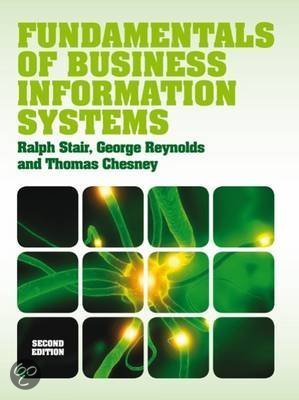Samenvatting
Information Technology Summary, Chapter 1-6,8,9
- Instelling
- Hogeschool Van Amsterdam (HvA)
Study: International Business and Languages (HvA, Year 1) Course: IT Book: Fundamentals of Business Information Systems; Stair, R. Summary Chapter 1-6,8,9
[Meer zien]





